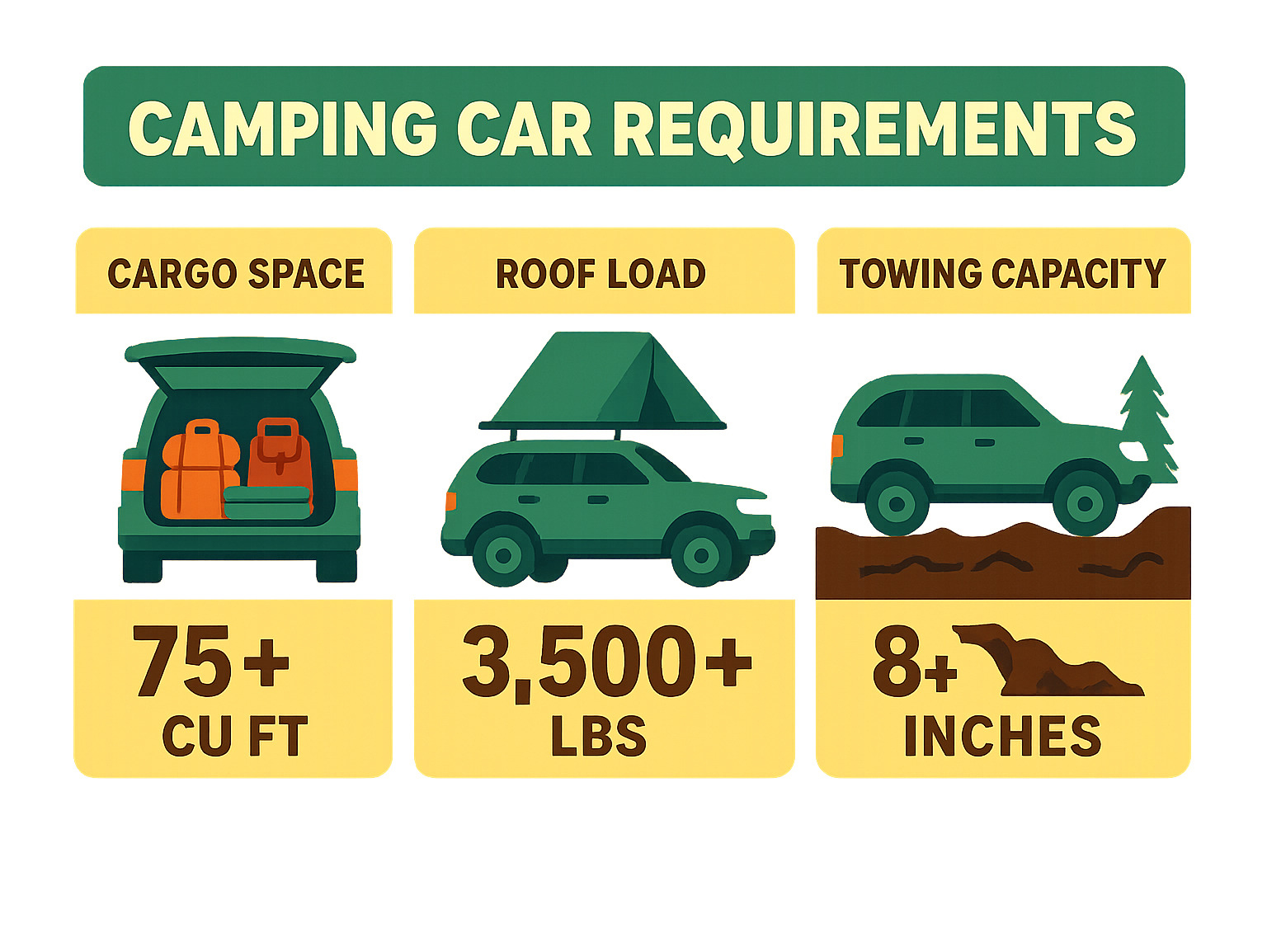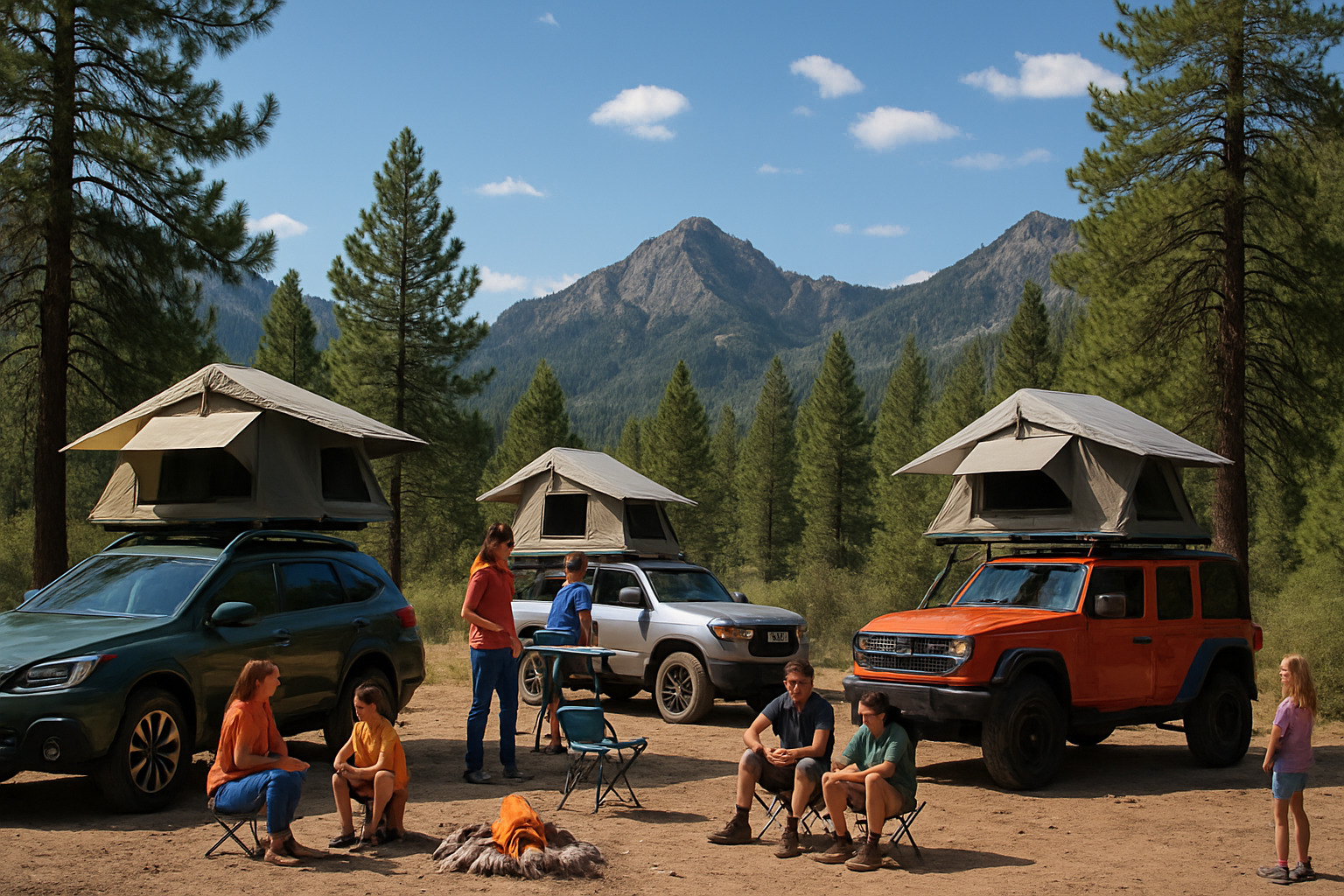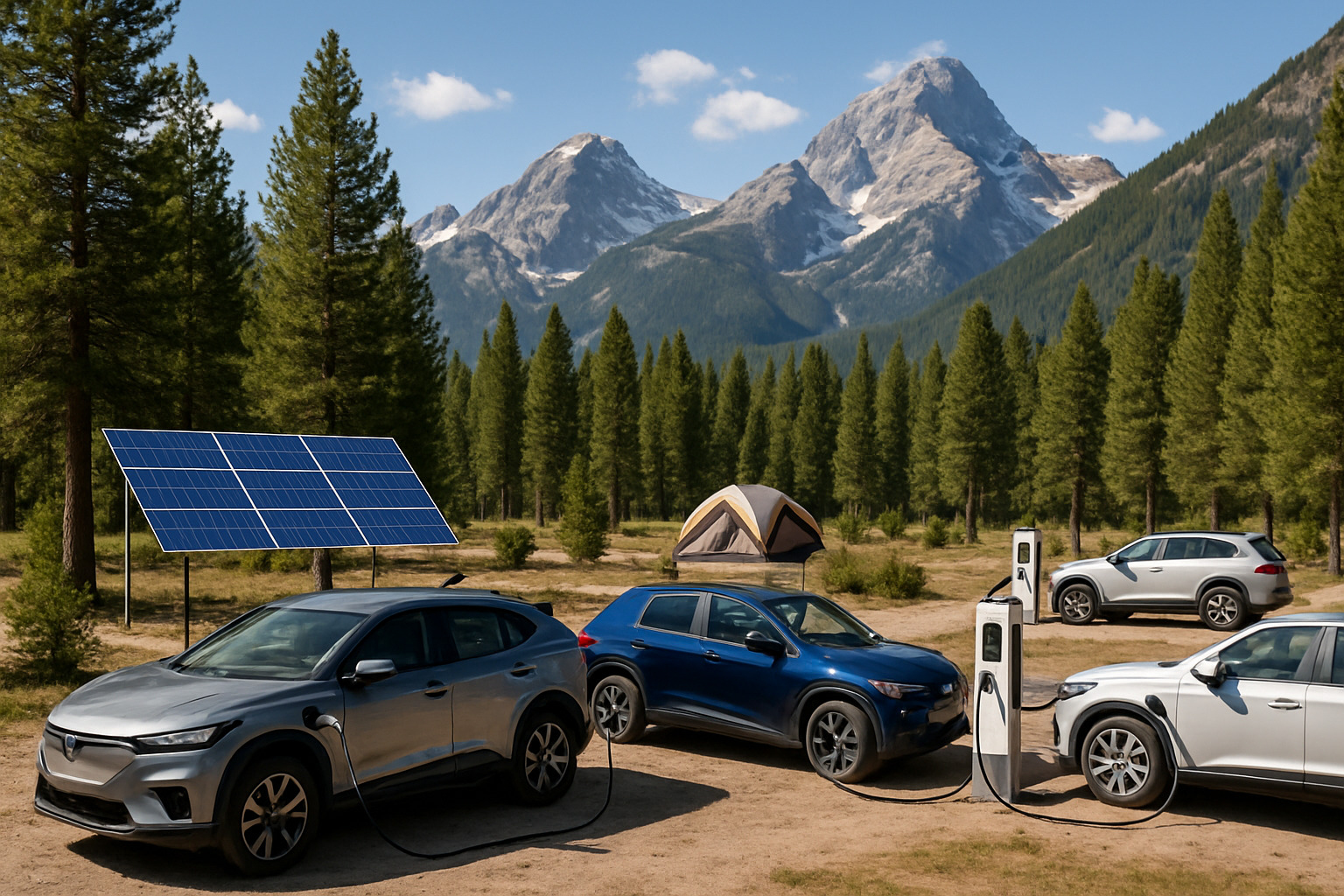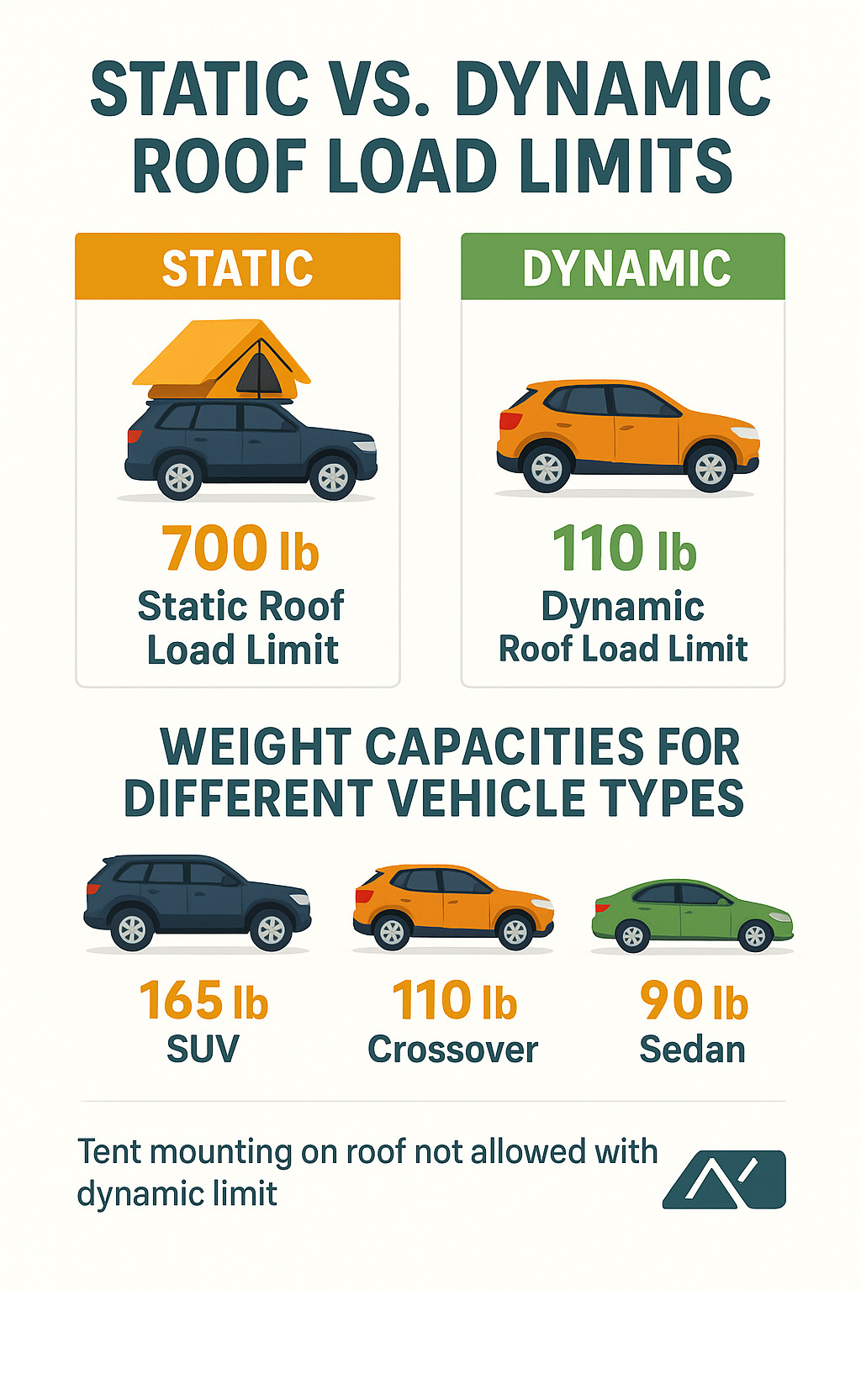Best Camping Car 2025: Top 10 Ultimate Adventure Picks
Why Finding the Best Camping Car Changes Everything
The best camping car isn’t just about getting to your destination – it’s about changing how you experience the great outdoors. Whether you’re hauling gear to established campgrounds or venturing off-grid to remote wilderness spots, the right vehicle makes all the difference.
Quick Answer: Top Best Camping Car Categories
- Mid-Size SUVs – Toyota 4Runner, Subaru Outback (up to 89.7 cu ft cargo, 5,000 lb towing)
- Pickup Trucks – Ford F-150, Toyota Tacoma (up to 13,200 lb towing, bed camping options)
- Family Haulers – Chevrolet Suburban, Kia Telluride (up to 121.7 cu ft space, sleeps multiple)
- Electric Options – Rivian R1T, Jeep Grand Cherokee 4xe (silent camping, onboard power)
Key features that separate great camping cars from regular vehicles include:
- Cargo space (75+ cubic feet ideal)
- Payload capacity (1,500+ pounds recommended)
- Towing ability (3,500+ pounds for trailers)
- Ground clearance (8+ inches for trails)
- All-wheel drive for traction on rough roads
Your camping style determines your ideal vehicle. Weekend warriors might love a Honda CR-V’s 28 mpg efficiency, while serious overlanders need a Toyota 4Runner’s off-road prowess and 300-pound roof load capacity.

Best camping car terms to remember:
– automobile camping
– kia telluride
– subaru outback
Choosing the Best Camping Car: Key Features that Matter
Finding your best camping car means looking beyond flashy features to focus on what actually matters when you’re miles from civilization with a trunk full of gear.
Cargo space is your first reality check. The Subaru Outback gives you 32.5 cubic feet with seats up, expanding to 75.7 cubic feet when folded down. The Toyota 4Runner steps up with 47.2 to 89.7 cubic feet of space – like having a walk-in closet on wheels.
Payload capacity is where many campers get caught off guard. A typical camping setup for two people plus gear weighs around 696 pounds. Make sure your vehicle can handle this load safely.
Towing capacity opens up new camping possibilities. The Honda CR-V can pull 1,500 pounds for lightweight popup campers, while the Ford F-150’s 13,200-pound capacity handles full travel trailers.
Dynamic versus static roof load matters for rooftop tents. Dynamic load applies while driving (usually 110-165 pounds), while static load is when parked (often 300-700 pounds). The Subaru Outback Wilderness handles 220 pounds dynamic and 700 pounds static.
All-wheel drive and four-wheel drive systems help reach hidden camping gems. AWD systems like the Honda Pilot’s work automatically, while 4WD systems in vehicles like the Jeep Wrangler offer low-range gearing for challenging terrain.
Ground clearance determines which trips you can attempt. Most crossovers offer 8-9 inches for maintained dirt roads, while the Toyota 4Runner’s 9.6 inches opens up more challenging trails.
Don’t forget fuel efficiency – the Honda CR-V’s 28 mpg keeps costs reasonable, while the Toyota 4Runner’s 17 mpg delivers off-road confidence at the pump’s expense.
How Much Room & Weight Do You Really Need?
Start with an honest assessment of your typical camping load. Two adults weigh about 300 pounds, camping essentials add 150 pounds, food and water contribute 50 pounds, clothing adds 75 pounds, and pets with supplies add 75 pounds. Total payload: 696 pounds.
Cargo volume planning prevents departure disasters. Weekend camping for two requires 50-75 cubic feet, week-long trips need 75-100 cubic feet, and family camping demands 100+ cubic feet.
| Vehicle Class | Cargo Space | Payload Range | Best For |
|---|---|---|---|
| Compact SUV | 25-75 cu ft | 1,000-1,400 lbs | Weekend trips |
| Mid-Size SUV | 40-90 cu ft | 1,200-1,600 lbs | Extended camping |
| Full-Size SUV | 80-140 cu ft | 1,500-2,000 lbs | Family trips |
| Pickup Truck | 60-80 cu ft | 1,200-2,000 lbs | Gear hauling |
Budget & Financing Tips for Your Best Camping Car
Smart financing considers total cost of ownership – not just sticker price, but insurance, fuel, and maintenance. A new Toyota 4Runner starts around $40,000 but holds value incredibly well. Used 4Runners from 2016-2019 offer similar capability at $25,000-$35,000.
The Honda CR-V represents outstanding value – new models start around $28,000, while 3-5 year old examples cost $20,000-$25,000. Certified pre-owned vehicles offer a sweet spot between new car features and used car savings.
Modification budgets add up quickly. Basic camping accessories cost $500-$1,500, while serious overlanding upgrades can add $5,000-$15,000.
For competitive financing rates, explore automotive lending options through Dignifi’s platform, which offers downpayment assistance and helpful financing tools.
Top Picks for 2024/2025: SUVs, Trucks, Vans & EVs
Finding the best camping car has never been easier, thanks to vehicles designed with outdoor enthusiasts in mind. Today’s automakers offer hybrid minivans with camping packages, electric trucks that power your basecamp, and SUVs engineered for rooftop tents.
Ready to go beyond basic camping? Check out our comprehensive guide to the best overlanding vehicles for serious off-road trips.
The Mid-Size SUV Sweet Spot — Your Gateway to the Best Camping Car
Mid-size SUVs hit the perfect balance – capable enough for real trips, efficient enough for daily driving, and spacious enough for family camping.
The Subaru Outback Wilderness stands out with nearly 10 inches of ground clearance and standard all-wheel drive. The 75.7 cubic feet of cargo space handles weekend gear for four people, while the 700-pound static roof load capacity accommodates any rooftop tent. The boxer engine delivers over 30 mpg on highways, and the 2,700-pound towing capacity handles small camper trailers.
The Toyota 4Runner remains the undisputed king with up to 89.7 cubic feet of storage and 5,000-pound towing capacity. The body-on-frame construction handles rough trails that would rattle crossovers apart. Expect around 17 mpg fuel economy, but that proven V6 engine runs forever with basic maintenance.
The Ford Bronco brings modern tech to classic off-road DNA. The four-door version packs 77.6 cubic feet of space and tows 4,500 pounds. The removable doors and roof panels create an best open-air camping experience.

Trucks That Do It All: Haul, Tow, and Sleep Under the Stars
Pickup trucks represent the ultimate camping vehicles for serious gear haulers, combining massive towing capacity with versatile beds that transform into mobile basecamps.
The Ford F-150 dominates with incredible versatility. That maximum 13,200-pound towing capacity handles massive travel trailers, while the Pro Power Onboard system provides up to 7.2 kW of household power for coffee makers, lights, and refrigerators. The aluminum body construction improves both payload and fuel economy.
The Toyota Tacoma leads mid-size trucks with legendary reliability. Its 6,800-pound towing capacity and spacious bed handle serious gear loads, while advanced 4WD systems conquer challenging trails. Tacomas run forever with basic maintenance – crucial when you’re hundreds of miles from dealers.
The Chevrolet Colorado ZR2 brings desert racing technology to camping trips. Those Multimatic dampers provide smooth rides over rough terrain, while the 6,000-pound towing capacity and 1,280-pound payload handle substantial camping loads.
Family Haulers & Van Life Contenders
Large SUVs and minivans excel at family camping trips, offering spacious interiors that keep everyone comfortable on long trips.
The Toyota Sienna Woodland Edition revolutionizes family camping with its hybrid powertrain and outdoor-focused features. All-wheel drive provides confidence on rough roads, while 36 mpg combined keeps costs reasonable. With seats removed, you get up to 150 cubic feet of cargo space.
The Kia Telluride X-Pro combines luxury with genuine off-road capability. Its 86.7 cubic feet of storage and 5,500-pound towing capacity handle substantial family loads, while the advanced AWD system tackles challenging terrain.
Silent Nights: Electric & Plug-In Hybrid Choices for the Best Camping Car
Electric and hybrid vehicles bring exciting possibilities to camping trips with silent operation and innovative power management systems.
The Rivian R1T and R1S lead the electric revolution with impressive capability. The R1T offers up to 410 miles of range with 11,000-pound towing capacity, while “Camp Mode” maintains climate control without engine noise. Multiple power outlets can run camping appliances for days.
The Jeep Grand Cherokee 4xe combines legendary off-road capability with plug-in hybrid efficiency. Its 25-mile electric range allows silent campsite arrival, while the combined powertrain provides 375 horsepower for serious towing.

Must-Have Mods & Accessories to Turn Any Ride into the Best Camping Car
The right modifications transform your everyday vehicle into the best camping car for your trips. Whether working with a $500 weekend budget or planning a $15,000 overlanding build, smart upgrades completely change your outdoor experience.
Rooftop tents are the crown jewel of camping modifications. Hard shell tents set up in under two minutes for around $2,250, while soft shell options offer more space for about $1,049. Always check your vehicle’s static roof load capacity first – the Subaru Outback Wilderness handles 700 pounds static, while the Ford Bronco limits you to 110 pounds dynamic.
Pickup truck owners benefit from bed racks and slide-out systems that organize gear hauling. Bed tents create protected sleeping spaces without worrying about wet ground or wildlife.
Storage solutions prevent camping avalanches when opening your tailgate. Modular boxes fit specific vehicles, while cargo nets stop gear from becoming projectiles during mountain drives.
Portable power systems revolutionize camping comfort. Modern battery packs run laptops, charge devices, and power LED lights for days. Solar panels provide indefinite power, while fast charging restores full power at developed campgrounds.
For comprehensive guidance, check out The Ultimate Guide to Car Camping in 2025: Turning Your Car into a Cozy Home. For premium rooftop tents, Roofnest offers innovative designs for serious camping enthusiasts.

Quick-Install Upgrades for Weekend Warriors
The best modifications are often the simplest. These quick-install upgrades cost under $500 total and transform your vehicle in minutes.
Window screens turn your vehicle into comfortable sleeping space without bugs. Magnetic versions attach instantly without damage, letting you sleep with windows cracked for airflow. Privacy shades block prying eyes while reflective versions reduce interior heat.
Cargo organizers solve the “where’s my headlamp?” problem. Collapsible bins adapt to different loads while keeping everything organized.
Inflatable mattresses designed for vehicles provide surprisingly comfortable sleep. Modern versions self-inflate and pack small, while contoured designs fit perfectly in folded-down SUV cargo areas.
LED lighting systems improve safety and ambiance. Battery-powered lanterns with smartphone control adjust brightness and color, while magnetic work lights stick anywhere you need task lighting.
Pro-Level Overlanding Gear
When tackling remote destinations, pro-level overlanding gear transforms your best camping car into an expedition-ready machine.
Suspension upgrades dramatically improve ride quality and capability. Lift kits provide crucial ground clearance, while specialized shocks deliver control over washboard roads.
All-terrain tires provide traction for loose sand, slick rock, and muddy trails. Larger sizes increase ground clearance but may hurt fuel economy.
Armor and protection systems shield vital components from expensive damage. Skid plates protect engines and transmissions from rock strikes that could end trips instantly.
Recovery equipment becomes essential when days from cell towers. Winches extract stuck vehicles from impossible situations, while communication devices enable emergency contact from anywhere.
Frequently Asked Questions about the Best Camping Car
Let’s tackle the most common questions we hear from camping enthusiasts looking for their perfect vehicle. These answers come from real-world experience and countless hours testing vehicles in actual camping conditions.
What’s the difference between dynamic and static roof load?
This question comes up constantly, and for good reason – getting it wrong can damage your vehicle or create dangerous driving conditions. Dynamic roof load is the weight your vehicle can safely carry while you’re cruising down the highway. Most vehicles handle between 110-300 pounds dynamically.
Static roof load applies when you’re parked at camp with the engine off. This number jumps dramatically – often 2-3 times higher than the dynamic limit. Your best camping car needs both ratings to work with your gear setup.
Here’s a real example: The Subaru Outback Wilderness handles 220 pounds while driving but supports a whopping 700 pounds when parked. This matters because most rooftop tents weigh 80-200 pounds, plus you’ll add sleeping bags, pillows, and other gear.
Always check your owner’s manual for exact numbers. Some people get creative and remove heavy items before driving, then reload at camp. Just remember – your roof structure has limits, and exceeding them gets expensive fast.
Do I really need AWD or 4WD for camping trips?
The honest answer? It depends on where you love to camp. If you stick to established campgrounds with paved roads, your Honda Civic will do just fine. But if you’re drawn to those Instagram-worthy remote spots, you’ll want some extra traction.
All-wheel drive (AWD) works automatically – no buttons to push or levers to pull. The Honda Pilot’s AWD system quietly sends power where it’s needed, whether that’s a muddy campground entrance or a steep boat launch. It’s perfect for families who want confidence without complexity.
Four-wheel drive (4WD) gives you more control but requires more knowledge. The Jeep Wrangler’s 4WD system includes low-range gearing for serious rock crawling, but you need to understand when and how to use it properly.
Even light rain can turn innocent-looking dirt roads into slip-and-slide trips. We’ve seen plenty of campers get stuck just trying to reach their campsite. The traction control also helps when backing down boat ramps or navigating wet grass at festivals.
Consider your camping personality. Love finding hidden gems down unmarked forest roads? Get 4WD. Prefer the convenience of developed campgrounds with occasional gravel roads? AWD provides plenty of confidence without the complexity.
How can I sleep comfortably inside an SUV without major mods?
Sleeping in your SUV doesn’t require a engineering degree or a huge budget. With some smart planning, you can create a surprisingly comfortable mobile bedroom that rivals many tents.
Start by measuring your cargo area with all seats folded flat. Most people are shocked by how much space they actually have. The key is creating a level sleeping surface – cargo areas often have ridges, bumps, and slopes that’ll keep you tossing all night.
A quality inflatable mattress transforms everything. The REI Co-op Camp Dreamer Double costs around $279 but provides genuine comfort for two people. Self-inflating pads work great for solo campers and pack down incredibly small.
Privacy matters more than you’d think. Reflective sunshades work in a pinch, but custom window screens provide ventilation while blocking prying eyes. Magnetic attachments won’t damage your vehicle like suction cups sometimes do.
Organization prevents that cramped, cluttered feeling. Use storage bins to contain gear and create clean sleeping space. Hanging organizers on seat backs keep essentials accessible without taking up precious floor room.
Climate control makes or breaks the experience. Crack windows for airflow while using screens to block bugs. Battery-powered fans move air around, and choosing the right sleeping bag prevents middle-of-the-night temperature struggles.
Practice your setup at home first. Seriously – trying to figure out your system in the dark after a long drive isn’t fun. A few trial runs in your driveway will reveal what works and what needs tweaking.
The best camping car for sleeping often surprises people. Sometimes a Honda CR-V with the right setup beats a massive SUV that wasn’t thoughtfully arranged. It’s all about maximizing your specific space efficiently.
Conclusion
Finding the best camping car isn’t just about picking a vehicle – it’s about open uping a whole new way to experience the outdoors. Whether you fall in love with the Toyota 4Runner’s go-anywhere attitude, appreciate the Subaru Outback’s sweet spot of efficiency and space, or get excited about the silent power of the Rivian R1T, the right vehicle becomes your ticket to incredible places most people never see.
The world of camping vehicles keeps getting better and more interesting. Electric and hybrid options let you slip into campsites without waking the neighbors (or the wildlife), while proven gas-powered workhorses like the Ford F-150 and Toyota Tacoma keep delivering the reliability that gets you home safe. Modern vehicles come loaded with features our parents could only dream of – built-in power outlets, modular storage systems, and factory camping packages that would make old-school overlanders jealous.
Here’s the truth: the best camping car for your neighbor might be terrible for you. A weekend warrior who sticks to established campgrounds will be perfectly happy with a fuel-sipping Honda CR-V and some clever accessories. But if you’re the type who wants to chase sunsets down unmarked trails, you’ll need something with the backbone of a Toyota 4Runner or the hauling power of a Chevrolet Colorado ZR2.
The beauty of modern camping lies in how simple modifications can transform almost any vehicle into a capable outdoor companion. You don’t need to spend a fortune – sometimes window screens, a good sleeping pad, and smart storage solutions make all the difference between a cramped night and comfortable rest under the stars.
Smart shoppers think long-term when choosing their camping companion. Vehicles like the Toyota 4Runner, Subaru Outback, and Ford F-150 hold their value remarkably well while providing decades of dependable service. They’re also backed by extensive dealer networks and thriving aftermarket communities, so you’ll never be stuck without parts or expert advice.
The real magic happens when you realize that one well-chosen vehicle can wear many hats. Your daily commuter becomes your weekend escape machine, which transforms into your gateway to remote wilderness experiences. That’s the freedom car camping offers – the ability to go wherever your curiosity leads, with everything you need riding along.
Remember to pack smart and choose wisely. The difference between a good camping trip and an unforgettable camping trip often comes down to having the right vehicle for your style of outdoor fun.
Want to maximize your vehicle’s potential beyond camping? Check out our guide to the best cars for road trips, where we explore how these same capable vehicles excel at cross-country highway trips.
At Car News 4 You, we understand that automotive passion and outdoor trip go hand in hand. Our expertise in luxury sports experiences and athlete-driven car trends gives us unique insight into how vehicle capability directly impacts your quality of life – whether you’re chasing racing leagues or chasing sunsets. Choose your camping companion wisely, and let the open road (and open trails) become your playground.








